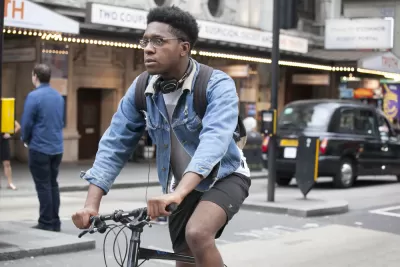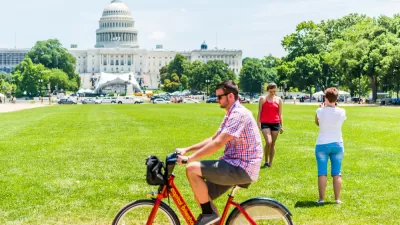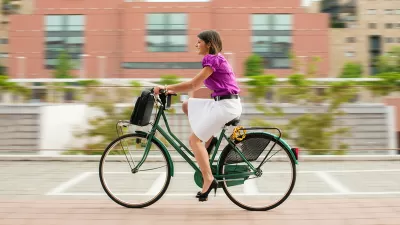While bike commuting remains below one percent as a regular transportation mode in the United States, the popularity of biking got a boost during the pandemic.

A report from The Bike Adviser outlines the state of bike commuting in the United States. “More and more Americans nowadays seem to value the exercise that they get from using the two-wheeled transport. From quicker and cheaper way of getting to and from work to more walkable neighborhoods and healthier people, biking is the source of many good things,” the report states.
Key findings include:
- “From 2000 to 2019, the number of commuters who bike to work increased from 488,000 to 786,000 or an increase of 61%,” although that number peaked at 904,463 in 2014 and has declined since then. “Oregon, Montana, Colorado, Wyoming and Washington ranked in the top 5 of all states with the largest percentage share of bike commuters.”
- “Of 786,000 people who commute by bike, 71% are men and about 29% are women.”
- According to the report, “Boasting excellent bike lanes and comprehensive bike safety laws, states like Oregon, Montana, Colorado, Wyoming and Washington have consistently ranked in the top 5 of all states for avid cyclists and exemplary infrastructure, advocacy, education and bike law enforcement.”
Despite its recent renaissance, bicycling remains the primary transportation mode for a small percentage of commuters. But as the report points out, the United States has a massive population. “At 0.6%, that’s a lot more bike commuters on our roads compared to many other countries in the world.” And “As cities around the US are wising up to the benefits of commuting by bike, miles of bike lanes are being added, making the streets safer and cracking down on dangerous car drivers threatening bike commuters.”
FULL STORY: The State of Bike Commuting in the U.S.

Maui's Vacation Rental Debate Turns Ugly
Verbal attacks, misinformation campaigns and fistfights plague a high-stakes debate to convert thousands of vacation rentals into long-term housing.

Planetizen Federal Action Tracker
A weekly monitor of how Trump’s orders and actions are impacting planners and planning in America.

In Urban Planning, AI Prompting Could be the New Design Thinking
Creativity has long been key to great urban design. What if we see AI as our new creative partner?

King County Supportive Housing Program Offers Hope for Unhoused Residents
The county is taking a ‘Housing First’ approach that prioritizes getting people into housing, then offering wraparound supportive services.

Researchers Use AI to Get Clearer Picture of US Housing
Analysts are using artificial intelligence to supercharge their research by allowing them to comb through data faster. Though these AI tools can be error prone, they save time and housing researchers are optimistic about the future.

Making Shared Micromobility More Inclusive
Cities and shared mobility system operators can do more to include people with disabilities in planning and operations, per a new report.
Urban Design for Planners 1: Software Tools
This six-course series explores essential urban design concepts using open source software and equips planners with the tools they need to participate fully in the urban design process.
Planning for Universal Design
Learn the tools for implementing Universal Design in planning regulations.
planning NEXT
Appalachian Highlands Housing Partners
Mpact (founded as Rail~Volution)
City of Camden Redevelopment Agency
City of Astoria
City of Portland
City of Laramie





























